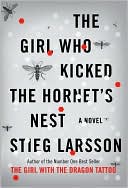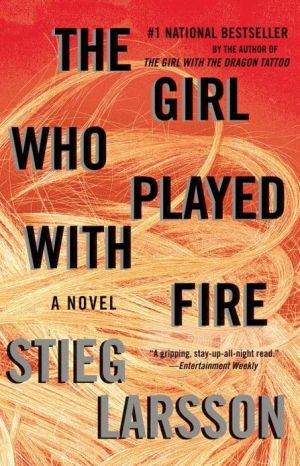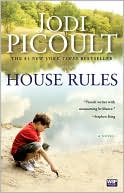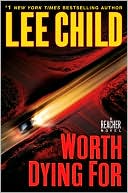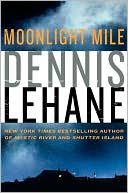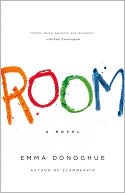City of Bones (Harry Bosch Series #8)
"On New Year's Day, Detective Harry Bosch fields a call that a dog has found a bone - a bone that the dog's owner, a doctor, feels certain is a human bone." "Bosch investigates, and that chance discovery leads him to a shallow grave in the Hollywood hills, evidence of a murder committed more than twenty years earlier. It's a cold case, but it stirs up Bosch's memories of his own childhood as an orphan in the city. He can't let it go. Digging through police reports and hospital records,...
Search in google:
A dazzling new Harry Bosch thriller--about the past reaching up to grab the present--from one of crime fiction's new masters.Orlando Sentinel...Bosch and Connelly are at their finest...a cracking pace...the investigation [is] tightly focused and credible...
Chapter One \ \ \ The old lady had changed her mind about dying but by then it was too late. She had dug her fingers into the paint and plaster of the nearby wall until most of her fingernails had broken off. Then she had gone for the neck, scrabbling to push the bloodied fingertips up and under the cord. She broke four toes kicking at the walls. She had tried so hard, shown such a desperate will to live, that it made Harry Bosch wonder what had happened before. Where was that determination and will and why had it deserted her until after she had put the extension cord noose around her neck and kicked over the chair? Why had it hidden from her?\ These were not official questions that would be raised in his death report. But they were the things Bosch couldn't avoid thinking about as he sat in his car outside the Splendid Age Retirement Home on Sunset Boulevard east of the Hollywood Freeway. It was 4:20 p.m. on the first day of the year. Bosch had drawn holiday call-out duty.\ The day more than half over and that duty consisted of two suicide runs—one a gunshot, the other the hanging. Both victims were women. In both cases there was evidence of depression and desperation. Isolation. New Year's Day was always a big day for suicides. While most people greeted the day with a sense of hope and renewal, there were those who saw it as a good day to die, some—like the old lady—not realizing their mistake until it was too late.\ Bosch looked up through the windshield and watched as the latest victim's body, on a wheeled stretcher and covered in a green blanket, was loaded into the coroner's blue van. He saw there was one other occupiedstretcher in the van and knew it was from the first suicide—a thirty-four-year-old actress who had shot herself while parked at a Hollywood overlook on Mulholland Drive. Bosch and the body crew had followed one case to the other.\ Bosch's cell phone chirped and he welcomed the intrusion into his thoughts on small deaths. It was Mankiewicz, the watch sergeant at the Hollywood Division of the Los Angeles Police Department.\ "You finished with that yet?"\ "I'm about to clear."\ "Anything?"\ "A changed-my-mind suicide. You got something else?"\ "Yeah. And I didn't think I should go out on the radio with it. Must be a slow day for the media—getting more what's-happening calls from reporters than I am getting service calls from citizens. They all want to do something on the first one, the actress on Mulholland. You know, a death-of-a-Hollywood-dream story. And they'd probably jump all over this latest call, too."\ "Yeah, what is it?"\ "A citizen up in Laurel Canyon. On Wonderland. He just called up and said his dog came back from a run in the woods with a bone in its mouth. The guy says it's human—an arm bone from a kid."\ Bosch almost groaned. There were four or five call outs like this a year. Hysteria always followed by simple explanation: animal bones. Through the windshield he saluted the two body movers from the coroner's office as they headed to the front doors of the van.\ "I know what you're thinking, Harry. Not another bone run. You've done it a hundred times and it's always the same thing. Coyote, deer, whatever. But listen, this guy with the dog, he's an MD. And he says there's no doubt. It's a humerus. That's the upper arm bone. He says it's a child, Harry. And then, get this. He said . . ."\ There was silence while Mankiewicz apparently looked for his notes. Bosch watched the coroner's blue van pull off into traffic. When Mankiewicz came back he was obviously reading.\ "The bone's got a fracture clearly visible just above the medial epicondyle, whatever that is."\ Bosch's jaw tightened. He felt a slight tickle of electric current go down the back of his neck.\ "That's off my notes, I don't know if I am saying it right. The point is, this doctor says it was just a kid, Harry. So could you humor us and go check out this humerus?"\ Bosch didn't respond.\ "Sorry, had to get that in."\ "Yeah, that was funny, Mank. What's the address?"\ Mankiewicz gave it to him and told him he had already dispatched a patrol team.\ "You were right to keep it off the air. Let's try to keep it that way."\ Mankiewicz said he would. Bosch closed his phone and started the car. He glanced over at the entrance to the retirement home before pulling away from the curb. There was nothing about it that looked splendid to him. The woman who had hung herself in the closet of her tiny bedroom had no next of kin, according to the operators of the home. In death, she would be treated the way she had been in life, left alone and forgotten.\ Bosch pulled away from the curb and headed toward Laurel Canyon.\ \ \ Excerpted from City of Bones by Michael Connelly. Copyright © 2002 by Hieronymus, Inc.. Excerpted by permission. All rights reserved. No part of this excerpt may be reproduced or reprinted without permission in writing from the publisher. \ \ \ \
\ From Barnes & NobleThe Barnes & Noble Review\ In A Darkness More than Night, Michael Connelly's complex hero Harry Bosch shared center stage with another Connelly protagonist (Terry McCaleb of Blood Work) in a convoluted homicide case in which Bosch himself became a primary suspect. In City of Bones, Bosch takes the lead in the high-profile investigation of a murder committed more than 20 years in the past.\ The investigation begins when a family pet unearths a cache of bones buried in a shallow grave in the hills above Laurel Canyon. Forensic evidence indicates that the bones are those of an adolescent boy who endured an extensive history of physical abuse. Bosch, who experienced his own share of adolescent trauma, takes the case to heart, pursuing every lead in the killing with typically obsessive zeal. Eventually, a phone call from a Los Angeles woman whose brother disappeared in 1980 sets Bosch on the proper path, and he identifies the dead boy as Arthur Delacroix. Locating Arthur's killer, however, turns out to be a difficult -- and hazardous -- business. Bosch's investigation leads to a number of dead ends and false conclusions before arriving at the sad, tawdry truth. Along the way, that same investigation claims two new victims: a solitary, rather pathetic set decorator who was once convicted of pedophilia, and an overzealous rookie policewoman with a lifelong penchant for high-risk activities.\ Though some of the characters are not as well developed or convincing as they are in Connelly's finest novels, such as The Black Echo and The Concrete Blonde, the central mystery in City of Bones is both compelling and affecting, and Connelly's portrayal of life in the inner circles of the LAPD is as credible as ever. Bosch himself -- that vulnerable, obsessive, sometimes self-destructive figure -- remains one of modern crime fiction's more durable creations. By the end of this particular investigation, Bosch has reached a turning point in his problematic 25-year career and faces a potentially life-altering decision. To be continued... (Bill Sheehan)\ \ \ \ \ \ \ Orlando Sentinel...Bosch and Connelly are at their finest...a cracking pace...the investigation [is] tightly focused and credible...\ \ \ Publishers WeeklyHarry Bosch is at the top of his form which is great news for Connelly fans who might have been wondering how much life the dour, haunted LAPD veteran had left in him. His latest adventure is as dark and angst-ridden as any of Bosch's past outings, but it also crackles with energy especially in the details of police procedure and internal politics that animate virtually every page. What other crime writer could make such dramatic use of the fact that the front door of a house trailer swings out rather than in, creating problems for a two-man team of detectives? Who else would create to such credible narrative effect an egotistic celebrity coroner who jeopardizes an investigation because she lets a TV camera crew from Court TV follow her around, or an overage female rookie cop so in love with danger that she commits an unthinkable act? When the bones of an abused 12-year-old boy who disappeared in 1980 turn up in the woods above Hollywood (near a street named Wonderland, where former governor Jerry Brown used to live), the case stirs up Bosch's memories of his own troubled childhood. Also, as his captain so aptly points out, Harry is the LAPD's prime "shit magnet," an investigator who attracts muck and trouble wherever he goes. So it's no great surprise when the investigation takes a couple of nasty turns, right up through the last chapter. Connelly is such a careful, quiet writer that he can slow down the story to sketch in some relatively minor characters a retired doctor, a couple who lived through their foster children without missing a beat. (One-day laydown Apr. 16) Forecast: Connelly doesn't need much help in hitting the charts, but Little, Brown is going all out anyway, with a massive television, radio and print ad campaign, transit ads in New York and a 10-city author tour. Expect blockbuster sales and blockbuster satisfaction. Copyright 2001 Cahners Business Information.\ \ \ \ \ Library JournalDetective Harry Bosch is back on the homicide scene in Hollywood when the body of a 12-year-old boy, who was the victim of repeated physical abuse, is discovered. To make the case more difficult, the murder trail is cold, being more than 20 years old. Harry's investigations uncover secrets-some better left undisturbed: family violence, desertion, past sins, the seamy side of a seemingly normal neighborhood. Harry, unable to leave the case unsolved, worries about the problem until he identifies a suspect. When his partner "clears" the case, with fatal consequences, Harry decides to hang up his gun. Well read by Peter Jay Fernandez, Connelly's latest thriller provides plenty of red herrings, plot twists, and romantic interest that will keep listeners guessing for a long time.-Joanna M. Burkhardt, Coll. of Continuing Education Lib., Univ. of Rhode Island, Providence Copyright 2003 Reed Business Information.\ \ \ \ \ Kirkus ReviewsConnelly takes his customary edge off Harry Bosch's latest case: the murder of a 12-year-old runaway that had never even been suspected until a playful dog turned up his bones in a shallow grave. Most of the people who lived in Laurel Canyon around 1980-the approximate date the forensics indicate the sorely beaten boy's life was abruptly ended with a final blow to the head-have long since moved on. So one of Harry's first jobs is figuring out who was even in the neighborhood when the boy was buried. Even after a distinctive skateboard allows Harry to identify the victim as Arthur Delacroix, lots of problems remain for Harry and Julia Brasher, the LAPD rookie who's soon sharing his confidences and his bed. A conversation with a known pedophile who lived a few doors away from Arthur's grave plunges Harry into official hot water. Arthur's abusive father is suspiciously eager to confess to the murder. And a routine chat with Johnny Stokes, a childhood friend of Arthur's who's grown up to be the complete loser, explodes in violence. Connelly handles all these episodes with his accustomed skill, but he can't hide the fact that they're episodes designed to make a 20-year-old homicide seem more urgent and dangerous to the present-day cast than it actually is. Harry still shines as a detective, and the sorry souls the evidence flushes out into the open go far to explain his conviction that "in every murder is the tale of a city." But the case itself is marked by coincidences and shifting suspicions that suggest untidiness rather than virtuosity, and there's precious little of the unremitting tension that's won Connelly such a following over the past ten years. A bone to throw to loyalists whilethey wait for another case to rival A Darkness More Than Night\ \

